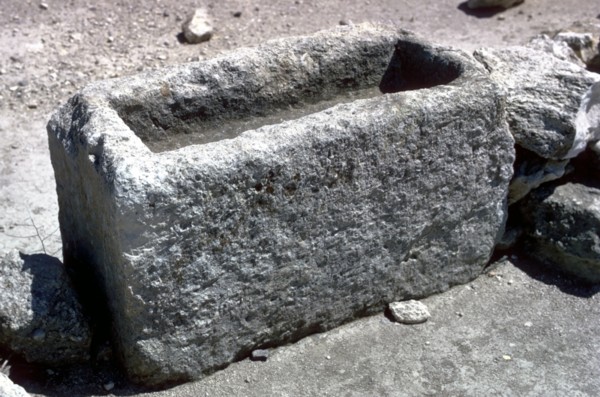
Throughout this season of Advent our focus is “The Story of Christmas in 20 Words.” On each of the 20 weekday mornings ending on Christmas Eve, we’ll spotlight a single word from the Gospel accounts that helps us ponder more deeply the birth of Jesus.
13. Manger
Every children’s Christmas pageant includes an innkeeper.
This role is usually given to the kid with the meanest face – or at least to someone who might one day work for the Bureau of Motor Vehicles. After all, the innkeeper has to turn away Mary and Joseph in their moment of direst need by saying something like, “Go somewhere else! There’s no room in the inn.”
Some of the pageants include a heartwarming moment where the innkeeper has second thoughts. “Wait, you don’t need to go away. There’s a stable out back, and I have some fresh straw. You’re welcome to stay as long as you like.”
This familiar drama and dialogue arise from a pair of well-worn verses: “While they were there [in Bethlehem], the time came for the baby to be born, and Mary gave birth to her firstborn, a son. She wrapped him in cloths and placed him in a manger, because there was no room for them in the inn” (Luke 2:6-7).
According to the story as most of us have heard it, the bedraggled young Mary and Joseph, exhausted from their 100-mile journey from Nazareth, ultimately wind up in a comfortable stable where Jesus comes into the world in the presence of lowing cattle, a gentle donkey, and some smelly sheep.
But none of those details appear in the Bible. There’s no mention of animals. Or a stable. Or an innkeeper. Or even an inn.
Wait. Didn’t we just read where it says there was no room in the inn?
Well, yes, we did. But this is one of those cases in church history where an unfortunate translation has taken on a life of its own.
Luke’s original phrase reads, “because there was no room for them in the kataluma.” During the past century linguistic scholars have discerned that the Greek word kataluma means “guest room” – a discovery that is increasingly reflected in newer translations. The translators of the King James Version of the Bible (1611), however, didn’t know that, and surmised that Luke must have meant “inn.”
So what picture was Luke apparently trying to convey?
A kataluma designated a spare room in a first century Palestinian house. It seems Luke was telling us that Mary and Joseph were in a private dwelling when Jesus was born. It is likely they were taken in by relatives who sympathized with their plight during the ongoing census in the Bethlehem area. But other guests had already settled into the guest room.
Ancient Palestinian homes looked a bit like split-level dwellings. The humans lived in the two or three rooms on the upper level.
Domestic animals could enter the lower level by means of a back door. Homeowners would bring them in at night for their own security (to protect them from predators and thieves), and to add much-need heat to the house’s interior (BTUs in this case representing Bovine Thermal Units).
And what do archeologists routinely find in the center of such simple houses?
There is often a manger – a feeding trough for animals – hewn out of local stone, like the one shown above.
It appears that Mary gave birth to Jesus in the common space of such a house. And because there were no special comforts or perks afforded by the availability of a guest room, Jesus’ first cradle was a large stone basin.
This picture may not jibe with the crèches on our fireplace mantels.
But it’s simple. And humbly beautiful. And entirely consistent with both the text and the times.
And it frees the kid with the meanest-looking face to dream about growing up and playing a different role.
Like maybe the coach of the New England Patriots.
